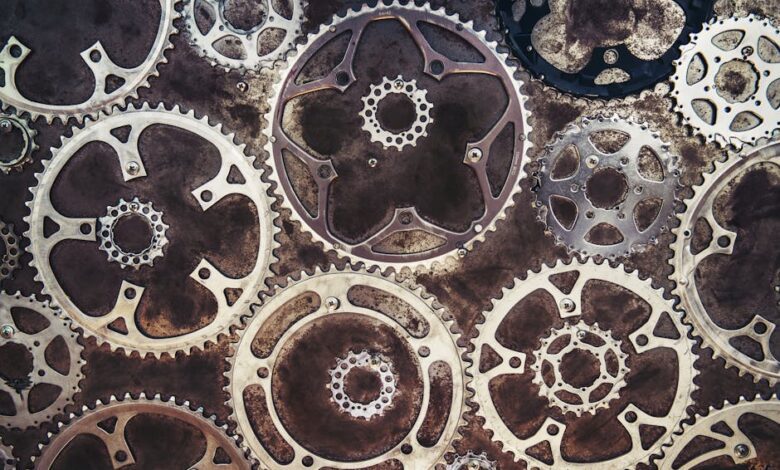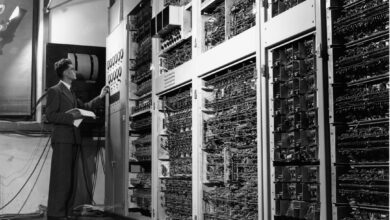Metals in Motion: Navigating Investment Opportunities and Industrial Trends

In today's rapidly evolving economic landscape, the significance of metals extends far beyond their traditional applications. As industries pivot toward sustainability and investors seek diversification, the roles of metals such as silver, copper, and rare earth elements are becoming increasingly critical. This article explores the multifaceted nature of these metals, starting with silver's unique position as both an industrial powerhouse and a reliable investment asset. We will delve into the ways copper prices serve as a barometer for global economic health, highlighting their influence on market trends. Additionally, the growing demand for rare earth metals driven by green energy technologies will be examined, revealing the intricate connections between innovation and resource extraction. Through a comparative analysis of platinum and palladium, we will assess which metal presents a more promising investment opportunity. Finally, we will discuss how inflation, regulatory changes, and the push for sustainability are shaping the future of metals in investment portfolios. Join us as we navigate this complex landscape, uncovering the vital roles that these essential commodities play in both economic and environmental contexts.
- 1. **Silver: A Dual Player in Industry and Investment**
- 2. **Copper Prices: A Barometer for Global Economic Trends**
- 3. **Green Energy and Rare Earth Metals: Shaping Future Demand**
1. **Silver: A Dual Player in Industry and Investment**
Silver is a unique metal that serves a dual purpose in both industrial applications and investment markets. On the industrial side, silver is valued for its excellent conductivity, thermal properties, and antibacterial qualities, making it essential in various sectors such as electronics, solar energy, and healthcare. The global shift towards renewable energy technologies has significantly increased the demand for silver, particularly in photovoltaic cells used in solar panels. As nations strive to reduce their carbon footprints, the role of silver in green technologies is likely to expand, further solidifying its industrial importance.
In the investment arena, silver is often considered a safe-haven asset, akin to gold. Investors turn to silver during times of economic uncertainty and inflation, as it is perceived to retain value and serve as a hedge against currency fluctuations. The metal's liquidity and relatively lower price compared to gold make it an attractive option for both individual investors and institutions looking to diversify their portfolios. Additionally, silver has a historical track record as a store of value, which continues to attract interest from those seeking to protect their wealth.
The interplay between silver's industrial demand and investment appeal creates a dynamic pricing environment. Fluctuations in industrial use can impact its availability for investment, while changes in investor sentiment can influence market perceptions of silver's value as a commodity. As the world increasingly embraces technologies that rely on silver, its role as both an industrial staple and an investment vehicle will likely grow, making it a critical player in the global metal market.
2. **Copper Prices: A Barometer for Global Economic Trends**
Copper prices have long been regarded as a reliable indicator of global economic health, often referred to as "Dr. Copper" due to its ability to diagnose the state of the economy. This base metal is integral to various industries, including construction, electronics, and manufacturing, making its demand closely tied to economic activity. When economies are thriving, the demand for copper typically increases, driving prices up. Conversely, during economic downturns, reduced industrial activity leads to lower demand and falling copper prices.
The correlation between copper prices and economic indicators such as GDP growth, industrial production, and manufacturing output is well-documented. For example, a surge in infrastructure projects or technological advancements can lead to increased copper consumption, reflecting positive economic trends. Additionally, geopolitical factors, trade policies, and supply chain disruptions can significantly influence copper prices, further solidifying its role as a barometer for economic conditions.
Investors and analysts closely monitor copper price movements, using them to gauge market sentiment and predict future economic activity. Fluctuations in copper prices can signal shifts in consumer demand and manufacturing trends, making it an essential metric for economic forecasting. As nations embrace initiatives to modernize infrastructure and transition to more sustainable energy sources, the demand for copper is expected to remain strong, reinforcing its status as a critical economic indicator.
3. **Green Energy and Rare Earth Metals: Shaping Future Demand**
The shift towards green energy technologies is significantly influencing the demand for rare earth metals, which are essential components in a variety of renewable energy systems and advanced technological applications. As the world increasingly prioritizes sustainable energy sources, the reliance on rare earth metals, such as neodymium and dysprosium, has surged. These metals are crucial for manufacturing high-performance magnets used in wind turbines and electric vehicle (EV) motors.
The global push for decarbonization and the implementation of policies aimed at reducing carbon emissions are driving investments in renewable energy infrastructure. For instance, the expansion of electric vehicles, which require significant amounts of rare earth elements for batteries and motors, is expected to accelerate demand further. According to industry forecasts, the transition to a low-carbon economy could increase the need for these materials exponentially over the next decade.
Moreover, technological advancements in energy storage, such as batteries for solar and wind energy systems, also depend on rare earth metals. As battery technologies evolve to enhance efficiency and capacity, the demand for specific rare earth elements will likely escalate.
However, the supply chain for rare earth metals poses challenges due to the geopolitical landscape, as a significant portion of these materials is concentrated in a few countries. This concentration can lead to supply risks and price volatility, impacting global markets. Thus, while green energy technologies are poised to shape future demand for rare earth metals positively, stakeholders must navigate the complexities of supply dynamics to ensure a stable and sustainable transition to renewable energy.
In conclusion, the interconnected landscape of metals, including silver, copper, rare earth elements, platinum, and aluminum, reflects broader economic trends and market dynamics. Silver’s unique position as both an industrial asset and a sought-after investment underscores its versatility, while copper prices serve as a reliable indicator of global economic health, providing insights into growth and stability. The surge in demand for rare earth metals, driven by green energy technologies, highlights the critical role these materials will play in the transition to renewable energy sources.
As investors weigh options between platinum and palladium, understanding the distinct characteristics and market conditions of each will be essential for informed decision-making. Furthermore, incorporating metals into investment portfolios can offer diversification benefits, especially in times of inflation, when precious and industrial metals often respond differently to economic pressures.
Looking ahead, aluminum’s potential in a sustainable economy presents exciting opportunities, but it must be balanced against the complexities of mining regulations, which can significantly influence metal prices. Overall, the landscape of metal markets is not only shaped by immediate economic factors but also by long-term trends towards sustainability and technological advancement, making it crucial for investors and industry stakeholders to remain vigilant and adaptable in their strategies.





